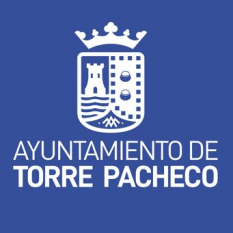Blog
»
{{catList[367].label}}
» Maria Dolores Andreo Maurandi
Maria Dolores Andreo Maurandi

Maria Dolores Andreo Maurandi was an internationally renowned painter and poet. Her pictorial work is exhibited in various museums such as the Spanish Museum of Contemporary Art in Madrid, the one in Barcelona and the Museum of Contemporary Art in Skopje, in Macedonia. In addition, she had a very popular poetry publication titled “Ni una palabra más”.
She was born on April 15, 1934 in Alhama de Murcia and was the daughter of Dolores Maurandi and Andres Andreo. Although her family was not developed in the artistic world, they did have creative sensibilities, especially her father, who played the piano, painted and worked with clay, as well as her older sister, who drew.
Although she grew up in post-war times, her family supported her studies. She met local artist Luis Garay, who helped her discover her true vocation for painting and advised her to study arts and crafts.
Later, she was awarded a scholarship by the March Foundation to study in Italy. Subsequently, she received another scholarship, from the Ministry of Foreign Affairs in Paris, where she completed her education in 1966.
This artist publicly acknowledged and used her Murcian and Mediterranean roots as inspiration for her works. She described her style as abstract expressionism. In the fullness of public recognition of her as an artist, she stood out for the exhibition of the sea as a symbol of freedom.
Her first works as an expressionist were of the face of Christ, drawing the attention of critics and artists of the time, and scandalizing the most conservative public.
Maria Dolores Andreo Maurandi never wanted to pigeonhole herself, which was why she had diverse technical approaches such as engraving, oil and acrylic. Her brush gave great importance to the line and construction of the painting, its predominant colour being black with the application of long, direct and thick strokes.
She had the opportunity to publish a book, "Ni una palabra más", in 1979, at the Ateneo de La Laguna (Canary Islands). Another of her achievements came in 1995, when she collaborated as an illustrator and poet on the collective work "Brújulas Brujas", which was published in different languages.
In 2000, she was named a favourite daughter by the City Council of Alhama de Murcia. However, little by little, she moved away from her creative world and reduced her participation in individual and group exhibitions.
She died at the age of 72 in her hometown, on June 13, 2006, and was consecrated as one of the most important Murcian brushes of the second half of the 20th century and the beginning of the 21st.
She was born on April 15, 1934 in Alhama de Murcia and was the daughter of Dolores Maurandi and Andres Andreo. Although her family was not developed in the artistic world, they did have creative sensibilities, especially her father, who played the piano, painted and worked with clay, as well as her older sister, who drew.
Although she grew up in post-war times, her family supported her studies. She met local artist Luis Garay, who helped her discover her true vocation for painting and advised her to study arts and crafts.
Artistic formation
In 1957, she finished her studies in teaching in the city of her birth. At the age of 23, she travelled to Madrid to continue studying and living off her great passion, painting, specializing artistically in drawing, lithography and nudes.
Among her mentors throughout her career were Eduardo Peña and the Greek Dimitri Papagueorguius. In 1965, she held her first collective exhibition and attended foreign biennials. She received the second silver medal at the II National Painting Exhibition in Murcia.
Among her mentors throughout her career were Eduardo Peña and the Greek Dimitri Papagueorguius. In 1965, she held her first collective exhibition and attended foreign biennials. She received the second silver medal at the II National Painting Exhibition in Murcia.
This artist publicly acknowledged and used her Murcian and Mediterranean roots as inspiration for her works. She described her style as abstract expressionism. In the fullness of public recognition of her as an artist, she stood out for the exhibition of the sea as a symbol of freedom.
Her inspiration from expressionism
She identified with this artistic current because she had the freedom to express nature and the human being from her feelings and colours; loneliness and misery were part of the aftermath of the post-war period.Her first works as an expressionist were of the face of Christ, drawing the attention of critics and artists of the time, and scandalizing the most conservative public.
Maria Dolores Andreo Maurandi never wanted to pigeonhole herself, which was why she had diverse technical approaches such as engraving, oil and acrylic. Her brush gave great importance to the line and construction of the painting, its predominant colour being black with the application of long, direct and thick strokes.
National and international achievements
Maria Dolores Andreo Maurandi held numerous international exhibitions, appearing in cities such as Madrid, Murcia, Buenos Aires, Huesca, Barcelona, Sao Paulo, Assisi, Paris, The Hague, Ljubljana, Munich and Monte Carlo.She had the opportunity to publish a book, "Ni una palabra más", in 1979, at the Ateneo de La Laguna (Canary Islands). Another of her achievements came in 1995, when she collaborated as an illustrator and poet on the collective work "Brújulas Brujas", which was published in different languages.
In 2000, she was named a favourite daughter by the City Council of Alhama de Murcia. However, little by little, she moved away from her creative world and reduced her participation in individual and group exhibitions.
She died at the age of 72 in her hometown, on June 13, 2006, and was consecrated as one of the most important Murcian brushes of the second half of the 20th century and the beginning of the 21st.
Activities in the region of Murcia
Share Article
More Articles










